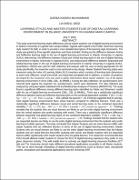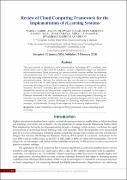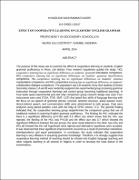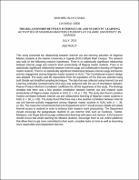| dc.description.abstract | ABSTRACT
This study examined learning styles differences among master students' use of digital learning environment in Islamic University In Uganda main campus Mbale, Uganda with respect to the Felder-Silverman learning style model (FSLSM), in order to provide a more detailed description of the learning style dimensions. The study was guided by three specific objectives and these included; finding out the difference between Active and Reflective learning styles in the use of digital learning environment in Islamic University in Uganda (IUIU), determining the difference between Visual and Verbal learning styles in the use of digital learning environment in Islamic University in Uganda (IUIU). and analyzing the difference between Sequential and Global learning styles in the use of digital learning environment in Islamic University in Uganda (IUIU). Quantitative method was used for data collection and analysis with the view of being appropriate for the study specifically, the researcher used a cross-sectional survey design. Master Students' learning styles were measured using the Index of Learning Styles (ILS) inventory which consists of learning style dimensions as active and reflective, visual and verbal, and sequential and global and In addition, a number of questions developed by the researcher were also used to gather information about master students’ use of the digital learning environment in IUIU (OBL,CBL, & MMBL). During the data collection, 94 questionnaires were returned back against the expected 111 questionnaires, which were distributed. The data collected was analyzed by using descriptive statistical tool and Multivariate Analysis of Variance (MANOVA). The study found a significant difference among different learning styles identified by Felder and Silveman's model with the use of digital learning environment (OBL, CBL & MMBL). There was a statistically significant difference between active and reflective learning styles on the combined dependent variables: F (3) = 2.133, Sig = .021 < p = .05; Wiki’s Lambda = .652; partial eta squared = .03. Findings suggested that on average, most digital learning environments favor active learners compared to reflective learners. There was a statistically significant difference between visual and verbal learning styles on the combined dependent variables: F (3) = 1.520, Sig = .002< p = .05; Wiki’s Lambda = .447; partial eta squared = .52. Findings revealed that the students who are visual learners are likely to use the entire digital learning environment than the verbal students who prefer studying with words. There was a statistically significant difference between sequential and global learning styles on the combined dependent variables: F (3) = 1.163, Sig = .000< p = .05; Wiki’s Lambda = .616; partial eta squared = .149. Findings revealed that the students who are sequential learners are likely to use the entire digital learning environment than the students who prefer learning in holistic approach. The study concluded that; Master Students who are active learners differ with master students who are reflective learners in terms of the use of digital learning environment. Master Students who are visual learners are likely to use the entire digital learning environment than the Master students who are verbal learners that prefer studying with words, and Master students who are sequential learners differ significantly with master students who are global learners. The researcher recommended that IUIU should allowed master students to choose the form of digital learning experience they prefer in any given classroom activity. This will enable them to actively use digital learning classroom facilities (ICT lab) and The University should make different educational applications accessible to all Master students. This can be done through embedding of digital learning experiences (such as lecture notes, educational games, simulations and educational applications) into the University ERP. | en_US |




